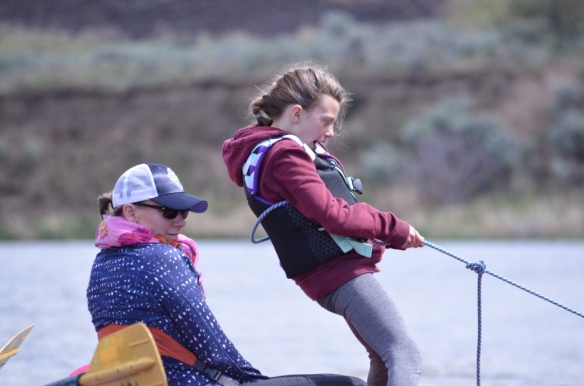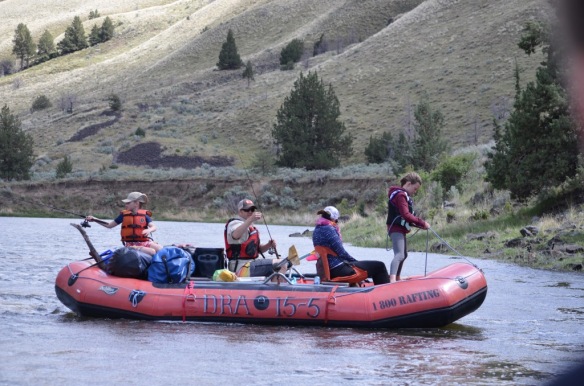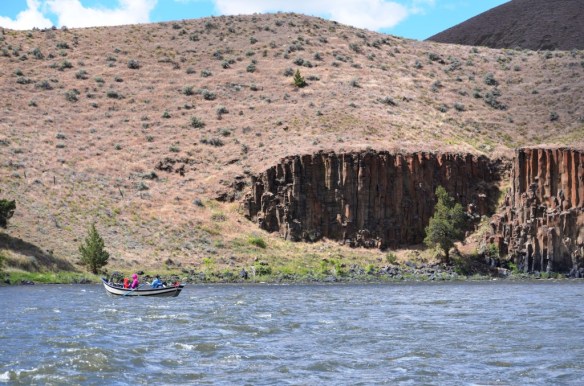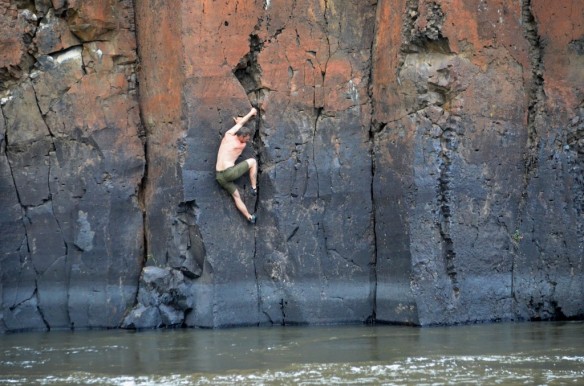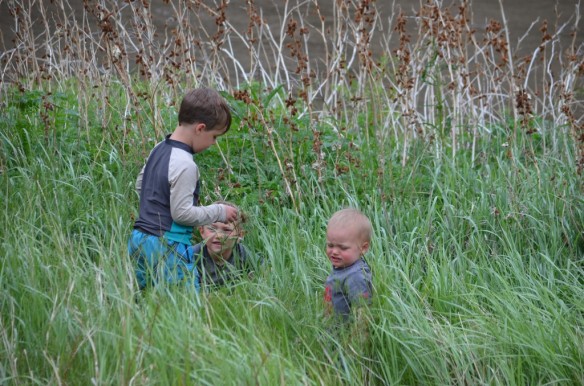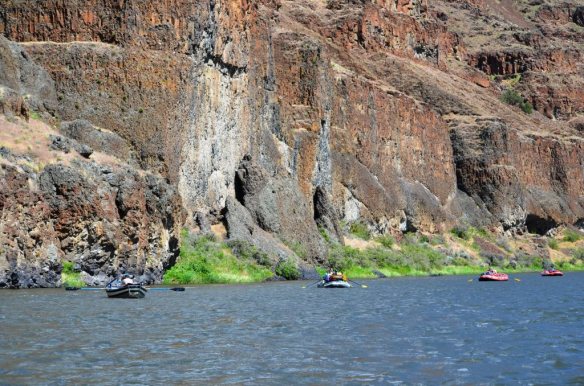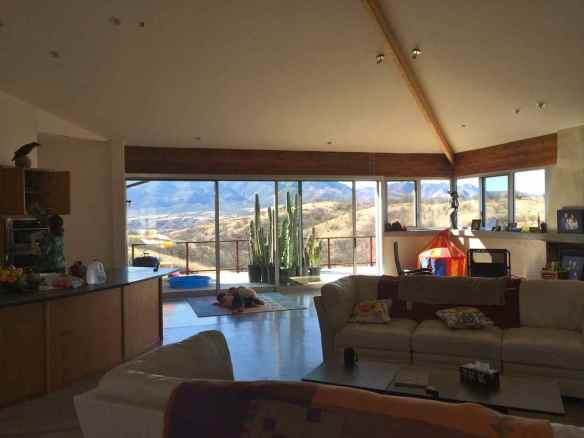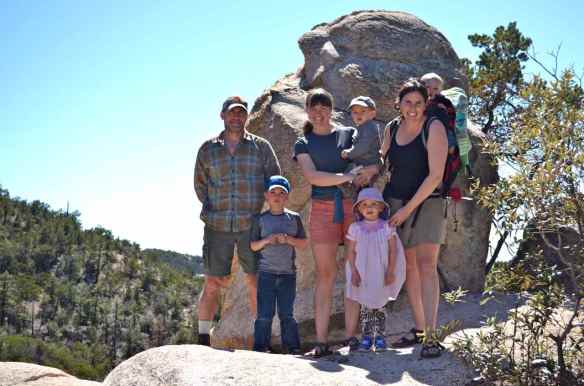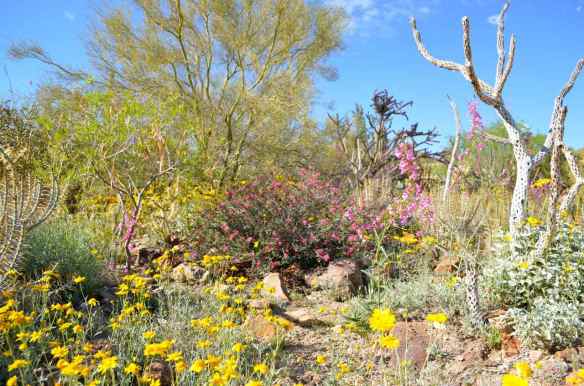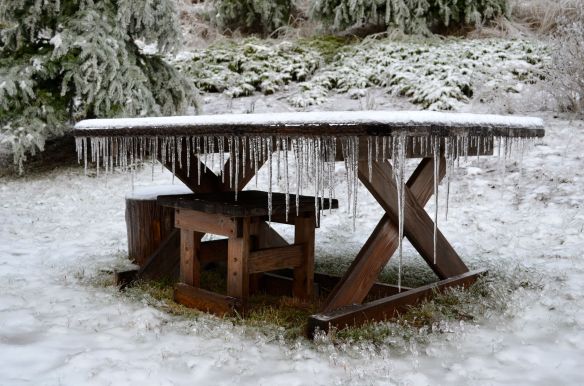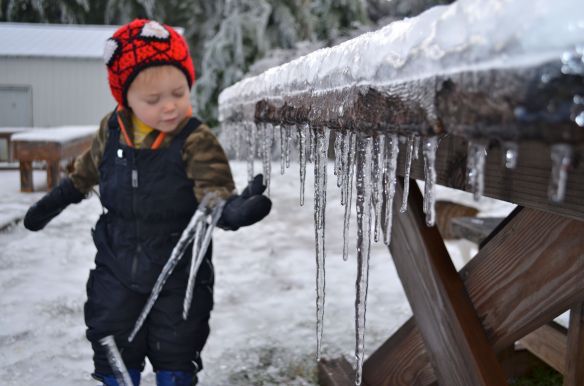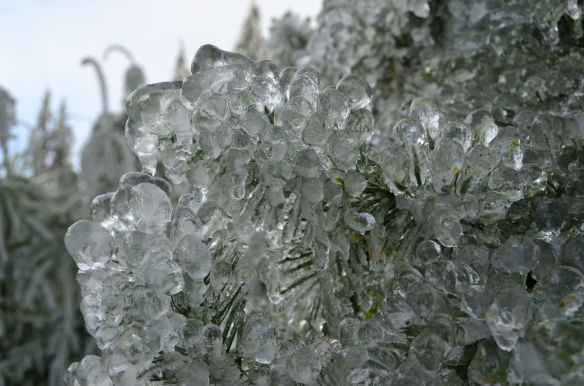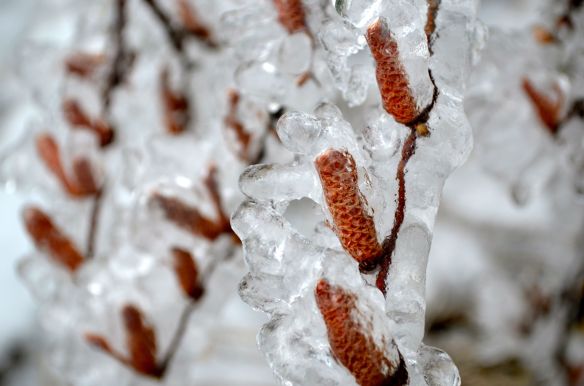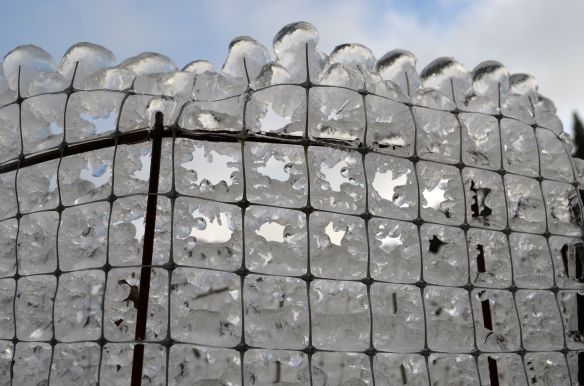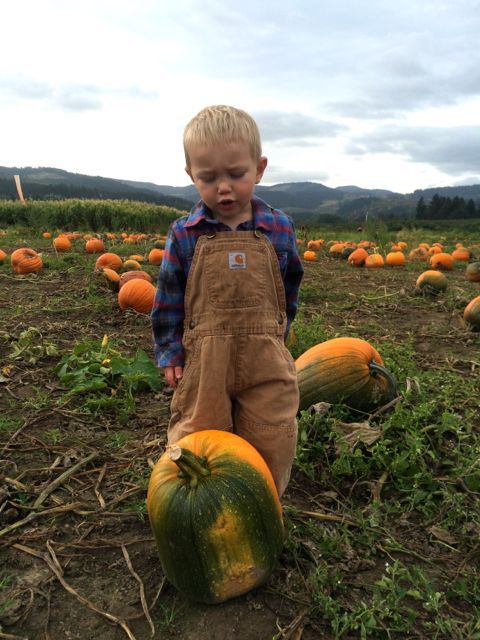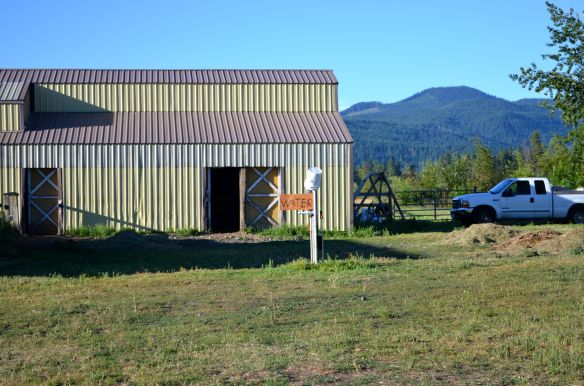Winter slithered down the streets as dirty brown slush, and darkness was starting to loosen its hold on day. Frustrated energy roiled in my body, tightly coiled, primed to mangle the first chore of spring with desperate joy, but it was not to be that day. My home, 100 miles away in the eastern foothills of the Cascade Mountains, was still buried under four feet of snow. On the more temperate west side of the mountains the crocuses were emerging and I was driving in the rain toward my childhood home up a long gray corridor I’d driven thousands of times over the last three decades.
The corridor seemed to me to be forever changing – new buildings, new overpasses, new signs. It was extremely familiar at the same time it was surprising, like walking the hallway of my home and suddenly seeing new art on the wall. The “progress” sprung from the shoulder of the freeway like weeds.
The rain beat down on the windshield, perfect white noise for my baby who slept like the dead in the back seat. Chase was my third baby, my last baby, a treat to savor slowly. I could just see his tiny stocking feet in the rear view mirror, one next to the other, perfectly still, the exact sort of smallness that filled me with enormous desires to create a better world, to get up time and again in the middle of the night when he cried, to kiss and cuddle and ruthlessly defend him with my fists and teeth and anything at all required to shelter those small feet from the hard rocks of the world.
Through the curtain of rain, I saw the world rushing by, so familiar and yet so grotesquely altered, like a loved one with a bad burn. I thought to myself:
‘Used to be there wasn’t an exit there, used to be there was a farm there, used to be that wasn’t a golf course or a strip mall or a warehouse, used to be I was a child, used to be I didn’t think so much about the future or the past, used to be this growth wasn’t so unchecked, used to be I didn’t think about unchecked growth all the time, used to be I didn’t think in terms of tumors, used to be my dad didn’t have cancer.’
As I exited the freeway, a cloverleaf exit now, winding my way through a maze of construction signs and temporary roads, in the towering shadow of the giant casino where used to be a two story farm house sat surrounded by fields where geese would feed and coyotes howl, as I drove past windows of flashing lights where people were training to be card dealers and someone was preparing to make a lot of money, as I turned up the driveway to my childhood home just below the outlet for the new stormwater retention pond, I remembered moons hanging over foggy fields, quiet but for crickets and tree frogs, rabbits darting into the road, sometimes running forever in the headlights before bailing into the shrubs. I remembered my dad on his tractor mowing blackberry vines whose berries I picked on my daily runs down the gravel road, my dad wearing his blue coveralls and work boots, his shining smile the only advertisement around. I remembered family walks. I remembered walking, my heart hammering, hand in hand with the first boy I thought I loved. I remembered telling my cousin our family dog was a bear and in the black night he had no reason to doubt me. I remembered the powerful muscles of our horse as he charged across the fields, his place for wild abandon, with my twin sister and I clinging to his back. I remembered the fractured rock I hated when it shifted and threw my tires, wrenching the handlebars of my bike from the control of my skinny arms. I remembered toning those arms by pulling rock back into potholes with a rake every summer. I remembered Dad in his suit and tie cutting the barbed wire fence so we could drive through the field around a fallen cottonwood tree on the way to my grandpa’s funeral. Those trees were always falling.
Now along the driveway, a sweeping expanse of recently disturbed dirt lay re-contoured to dispose of thousands of tons of earth displaced by the casino because cars need flat lots, because people don’t like walking uphill, because… anything to get them to spend more money.
My grief and my anger were like vinegar and baking soda and I exploded all over the car with rage every time I approached the farm, but that night I was glassy-eyed, my sorrow for the state of my home displaced by concern for my father.
He seemed worse. He was all but dragging one leg. He was having a harder time executing complex tasks especially those that required hand eye coordination, and he was suffering from headaches. He said it felt as though his toes were crossed when clearly they were not. He was increasingly dizzy. And a few days ago, he fell trying to get back into the house. It wasn’t a violent fall – he just sort of tipped over backwards. He spent fifteen minutes dragging himself around the garage until he could find something he could use to pull himself back up. He was falling asleep while we talked. Every time I visited the farm there was some new symptom – my familiar father was characterized now by change, just like the fields along the driveway.
Last summer, after his diagnosis, it was different. I was eight months pregnant with Chase and he’d just recovered from his biopsy. As I started down the driveway that summer day, Dad pulled up on his riding lawnmower, his blue coveralls faded and worn, his boots shiny with wear. He’d lashed a five-gallon bucket of animal feed to the lawnmower so he could drive around the farm and feed the rabbits. He was hunched over the wheel in racing position. Understanding the limits of his tractor’s speed, he reached into the bucket and broadcast a handful of feed across my windshield just as I was about to pull ahead. Raising his arms triumphantly in the air he veered away from the road, heroically losing the race and winning my heart.
I wanted to freeze my dad in that moment forever – his recently bald head and his skinny limbs, his clothes hanging off his frame, all the chemo reductions completely eclipsed by his indomitable spirit.
I felt pride and love and a terrible, terrible grief knowing that short of a miracle, I would soon watch my dad face excruciating pain, emotional desolation, erosion of the precious independence and freedom that shaped his entire life, physical decline and of course, inevitably, death.
Now it was early March. Nearly one year from the time my dad’s arm jumped off his lap of its own accord and he drove himself, past then farm fields, to the hospital and we learned he had terminal brain cancer. As I drove my car over the new black asphalt, past the recently hydro-seeded, sculptured parking lot buffers, trying not to look at the casino rising next door, I wondered what would be left. When my dad died and the farm was sold and the casino doors opened and tens of thousands of people walked across the parking lot where I used to stand alone and watch the geese feed, what would be left of my home, where would we gather, who would I be?
A gurgle in the backseat pulled me from my thoughts. Chase had a rattle in his hand that he shook impulsively, one of many symptoms of his incessant drive to learn and grow. His recent mastery of crawling was followed immediately by sprawling attempts to climb – he was always orienting toward the next step in the march of life. He had no time for self-indulgence. He did not nurse his wounds. He just accepted the fall and then he got up and tried again – over and over again. If the definition of insanity is trying the same thing over and over again expecting different results, then each of us, at a very early stage in life, is insane.
I texted my dad a picture of the blinking, towering sign announcing the casino’s grand opening in April. It was new since my last visit and I almost crashed my car when I saw it – looming in the field like a huge concrete bridge abutment for a road that went nowhere. “I hate this fucking sign,” I wrote – my profanity usurping the need for a vomiting, angry-faced emoticon.
His reply: “Don’t forget when you start getting discouraged about the changes here at home to take a drive up the Klickitat River and see all you’ve done to protect what we all love… damn good work my little darling.”
I was 37 years old, but I was sprawled out on my face that night, and his words put me back on my feet. Perhaps the point, I realized, was not what was gone after all of the incremental, excruciating change, but what remained.
Along the Klickitat River, conserved forever by the organization I worked for and that my dad helped found, were over 5,000 acres of incredible wild lands. Dad asked me to remember. So as I drove that long gray corridor where buildings sprouted like weeds, I remembered the dry stalks of lomatium that rattle like snakes in the late summer when I brush past them, the impossible geometry of mariposa lilies pink against the dry grass, the deer passing through fractured light under a canopy of oak. I remembered the perfectly pyramid-shaped mountain that towered above the creek where I met my husband and where later we decided to get married, and I remembered the high canyon wall opposite the Klickitat River where we were married. All of it protected forever from development – from roads and houses, from signs and casinos. Dad asked me to remember, and I did. Dad asked me to remember, and I will.
Most of all I’ll remember Dad, his worn coveralls and his makeshift bunny feeder, flinging feed across my windshield, willing to live in the face of death, even despite the casino rising.




